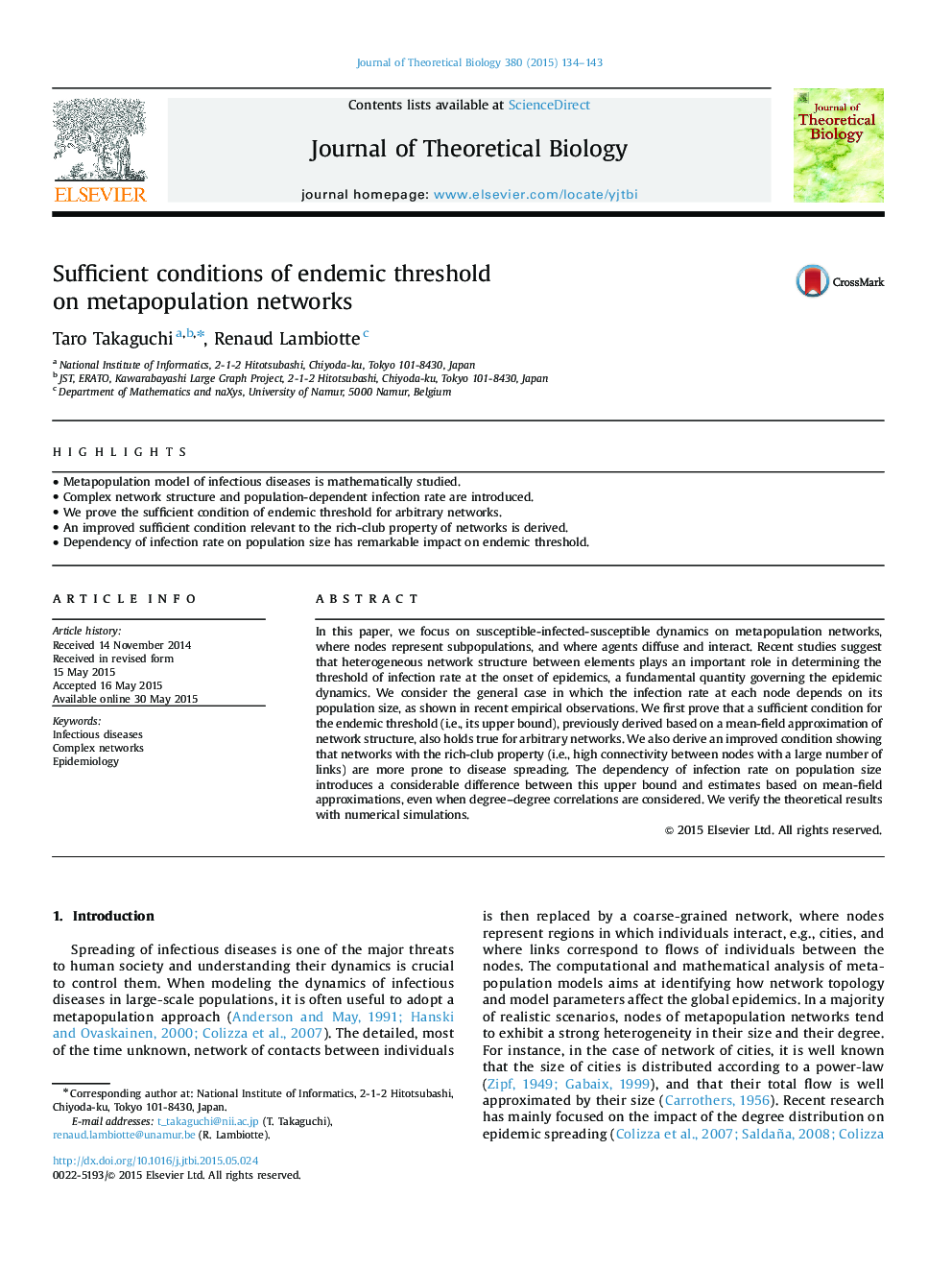| Article ID | Journal | Published Year | Pages | File Type |
|---|---|---|---|---|
| 6369605 | Journal of Theoretical Biology | 2015 | 10 Pages |
â¢Metapopulation model of infectious diseases is mathematically studied.â¢Complex network structure and population-dependent infection rate are introduced.â¢We prove the sufficient condition of endemic threshold for arbitrary networks.â¢An improved sufficient condition relevant to the rich-club property of networks is derived.â¢Dependency of infection rate on population size has remarkable impact on endemic threshold.
In this paper, we focus on susceptible-infected-susceptible dynamics on metapopulation networks, where nodes represent subpopulations, and where agents diffuse and interact. Recent studies suggest that heterogeneous network structure between elements plays an important role in determining the threshold of infection rate at the onset of epidemics, a fundamental quantity governing the epidemic dynamics. We consider the general case in which the infection rate at each node depends on its population size, as shown in recent empirical observations. We first prove that a sufficient condition for the endemic threshold (i.e., its upper bound), previously derived based on a mean-field approximation of network structure, also holds true for arbitrary networks. We also derive an improved condition showing that networks with the rich-club property (i.e., high connectivity between nodes with a large number of links) are more prone to disease spreading. The dependency of infection rate on population size introduces a considerable difference between this upper bound and estimates based on mean-field approximations, even when degree-degree correlations are considered. We verify the theoretical results with numerical simulations.
